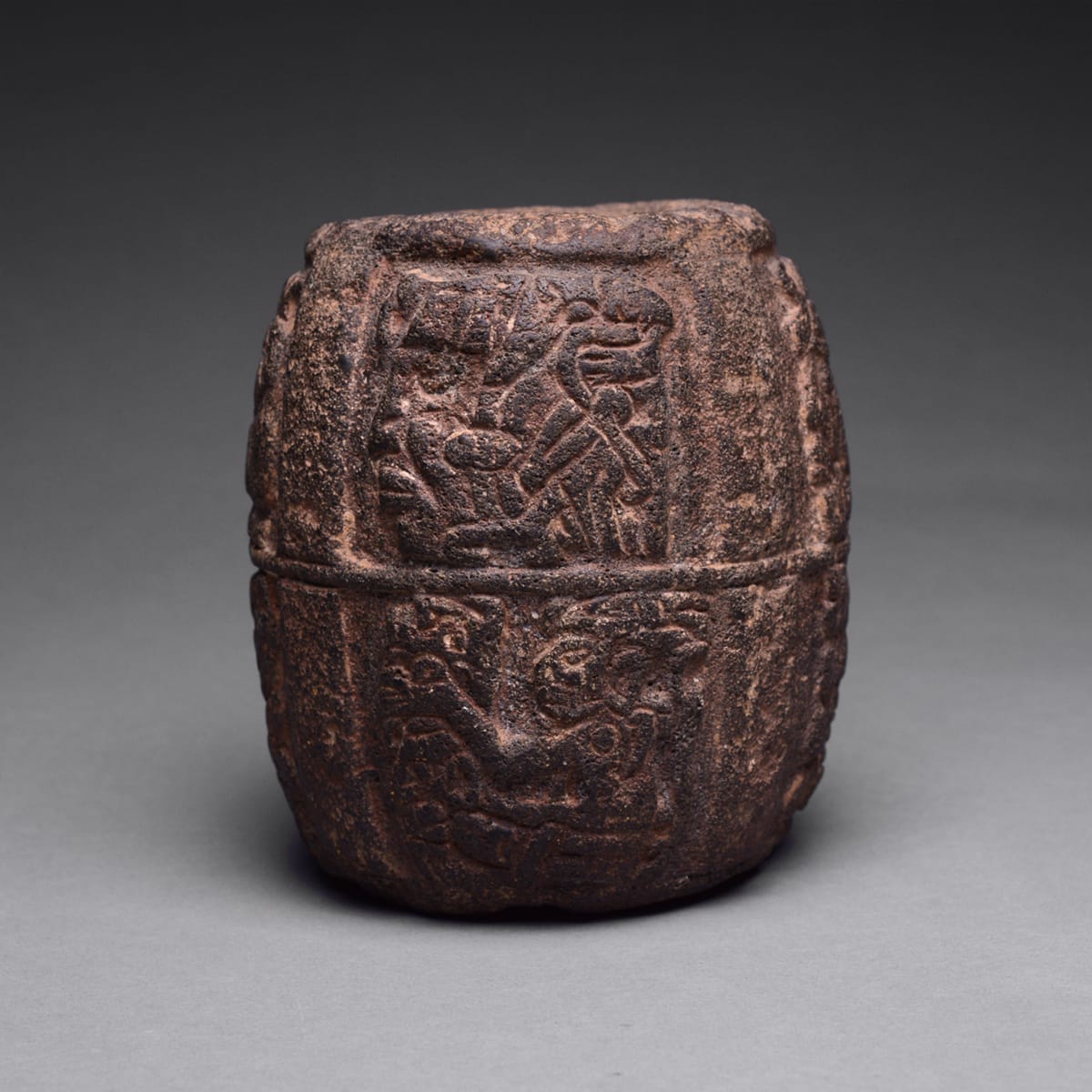Mayan Mace Head, 300 CE - 900 CE
Basalt
height 12.7 cm
height 5 in
height 5 in
PF.5747
Further images
Holding this piece in our hands, we begin to understand why the term “head-breaker” is used as a nickname for these objects. Clearly it would not be an enjoyable experience...
Holding this piece in our hands, we begin to understand why the term “head-breaker” is used as a nickname for these objects. Clearly it would not be an enjoyable experience to receive a blow from this heavy, carved hunk of volcanic stone. Originally attached to a wooden shaft, this device would have been a most deadly weapon. Today, we are moved by this piece not out of fear for the damage it is capable of causing, but out of awe for its stunning beauty and expert craftsmanship. As connoisseurs might relish the beauty of an antique gun, one can easily appreciate the quality and artistry this mace head represents. The cylindrical shape of the head has been divided horizontally into two registers, and vertically into four zones for a total of eight individual carvings. The upper register depicts a series of crowned faces, probably representations of gods, kings, or great warriors. The lower register contains a seated shaman figure and some more faces. The intricate, detailed carvings are simply stunning. This weapon may have been made for warring, but it is a work of art, and a masterpiece at that.







